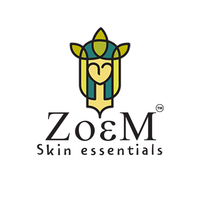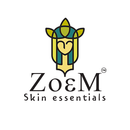How To Use Curd In Your Facial Care Routine.
Curd or Yogurt or yoghurt is one of the most popular fermented dairy products worldwide which has great consumer acceptability due to its health benefits other than its basic nutrition.
Being one of the most popular fermented dairy products which has a wide acceptance worldwide whereas its nutritional and health benefits are well known for centuries. The origin of yogurt is dated back to the 6000 B.C. when the Neolitic people in the Central Asia transformed from a status of a food gatherer to a food producer where they began the practice of milking their animals. It is generally accepted that the fermented milk products including yogurt have been discovered accidentally when they used to store milk in sheep-skin bags and has been evolved over centuries into commercial yogurt making which paved the pavement for different commercially available varieties with a range of flavors, forms and textures.
Chemical composition of Curd
According to the Code of Federal Regulations of the United States Food & Drug Administration (FDA), curd or yogurt can be defined as a food produced by culturing one or more of the optional dairy ingredients namely, cream, milk, partially skimmed milk, and skim milk, used alone or in combination with a characteristic bacterial culture that contains lactic acid producing bacteria, Lactobacillus bulgaricus and Streptococcus thermophilus. Yogurt should contain at least 3.25% of milk fat and 8.25% of Milk Solids Non Fat (MSNF) with a titratable acidity of not less than 0.9 percent, expressed as lactic acid.The composition requirement for milk fat and MSNF is applied to the yogurt prior to the addition of bulky flavoring ingredients according to the USDA specifications for yogurt. Traditionally yogurt is made of cow, water buffalo, goat and sheep milk.

Nutrient Profile of Curd
In general, curd is considered as a nutrition-dense food due to its nutrient profile and is a rich source of calcium that provides significant amounts of calcium in bio-available form. In addition, it provides milk proteins with a higher biological value and provides almost all the essential amino acids necessary to maintain good health.Curd is considered as a probiotic carrier food that can deliver significant amounts of probiotic bacteria into the body which can claim specific health benefits once ingested. These are usually marketed as bio-yogurts. Moreover, curd is reported to claim improved lactose tolerance, immune enhancement and prevention of gastrointestinal disorders. Because of these known health benefits of curd,consumer demand for curd and curd related products has been increasing and became the fastest growing dairy category in the global market. Curds are now being manufactured in numerous styles and varieties with different fat contents, flavors and textures.
Benefits of applying curd on face
Now you see, the benefits of yogurt go beyond protein and calcium.
In general, there are in-numerous benefits of applying curd on face daily, but in particular, the good bacterium in the anti-inflammatory yogurt can actually help in the anti-aging process and also helps with chronic skin conditions such as acne, rosacea, and even eczema.
For generations now, curd has been in use for facial skin glow, for face whitening and to reduce oil and dirt. Specifically, Curd and turmeric for face, Curd and Honey for face and Curd and gram flour for face have been the top three combinations used as effective DIY curd face packs.
What benefits do you pass to your skin when you apply curd on your face?
- Reduced acne and pimples, inflammation, sunburns, cell regeneration and tissue growth because of the highly astringent element, zinc.
- Deep hydration because of calcium .
- Glow because of Vitamin B2
- Protection of skin cells from free radicals because of riboflavin.
- Skin Cancer protection because of Vitamin B12
- Fine lines and Anti-wrinkle treatment due to the presence of lactic acid.
- Dead cell reduction because of the natural alpha hydroxyl acid- lactic acid.

Can you use Curd for face glow and under eye dark circles?
Yes, the lactic acid present in yogurt inhibits the production of an enzyme called tyrosinase. This bad enzyme is responsible for the production of melanin, and melanin is what causes your skin tone to darken. When melanin production is inhibited, you end up with a brighter and glowing skin tone.
The zinc present in yogurt helps to lighten blemishes and scars and also brightens the skin tone. Using a yogurt face mask regularly will help to get rid of those dark circles under the eyes once and for all.
Can you use Curd for oily skin?
Yes, the zinc present in yogurt reduces skin inflammation and also aids in reducing the amount of oil produced by the sebaceous glands.
Use curd with lemon to help clear clogged pores and exfoliate your skin. The lemon juice helps to even out skin tone and make the skin look brighter.
Can you use Curd for dry skin?
Yes, rejuvenate the skin and give a natural sheen by adding carrot macerate or just simple grated carrots and honey - they give a high dose of vitamin A,B,C,D,E,F and K and honey being a natural humectant, adds the extra dose of hydration.
Not only can you use these DIY packs of curd on skin but even for healthier, stronger and shinier hair
Yes, use curd with olive oil, vitamin E and egg for stronger hair.
Use curd with lemon for dandruff treatment.
Use curd with Indian gooseberry for hair growth.
Use curd with coconut oil and aloe vera gel for deep conditioning.
Use curd with overnight soaked fenugreek seeds water and rice water for hair loss.

Conclusion
In essence if you see, what we eat , how well it is digested, how nutritious it is, is what defines the quality of our skin and hair. If you treat your stomach like a dustbin, well that’s exactly what will sit on your face too.
Curd on face and curd in your stomach , both benegit the skin and hair. The molecules that are supposed to be kept inside your gut lining are actually seeping out into the bloodstream, and that can trigger system-wide inflammation and increase inflammatory markers in the skin. You will see these “inflammatory markers” manifest themselves as acne, redness, dry patches, and other skin abnormalities. So chose your foods carefully. Always.
Happy Skin!
Vibhuti


Leave a comment